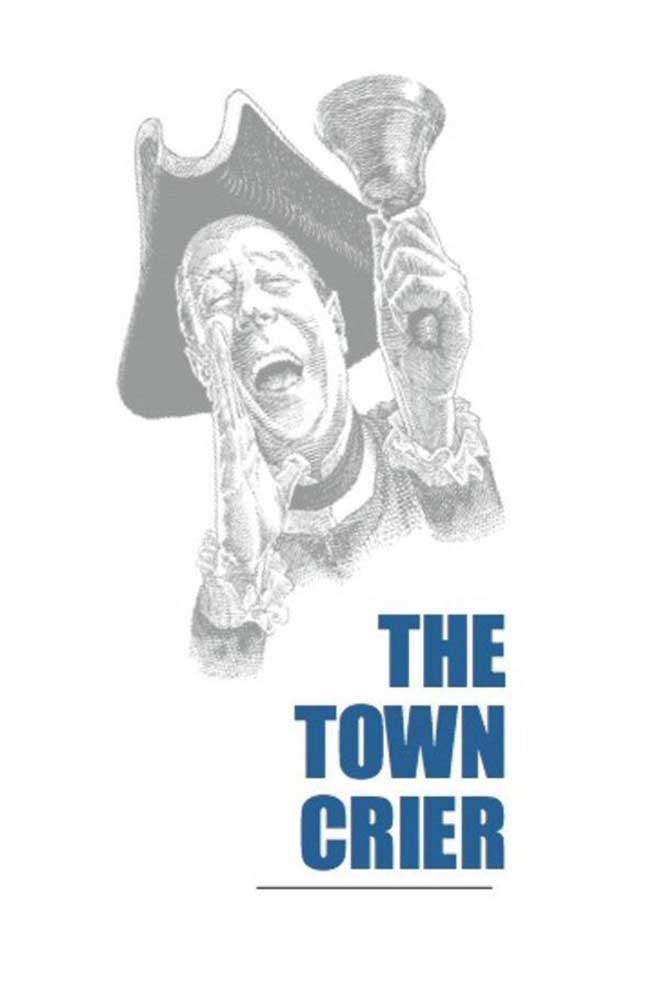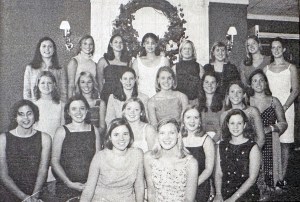The Town Crier: Mail order magic
Published 5:00 pm Sunday, July 9, 2023

- The Town Crier
With the click of a button on your computer you can find just about anything you could want anywhere in the world. Add it to your “cart,” punch in the credit card info and spend a little extra for next day delivery.
But before you click the “purchase” button, go to YouTube or TikTok and watch a video of someone that already has what you want to order. You’ll see exactly what it really looks like, how big it is, and get a review of what it’s made of and how well it will hold up once you get yours.
Trending
A couple of Halloweens ago my buddy was looking at these artificial jack-o-lanterns with lightup animated faces that sing. They were the size of big pumpkins and they cost quite a bit. Then he spotted what appeared to be the same product he could order from China for a fraction of the cost. When his jack-o-lanterns arrived they were the size of tennis balls and didn’t really do much of anything but light up. He leapt before he looked. But back years ago, you made decisions based on a cartoon drawing in the back of a magazine and you had to mail order for stuff you wanted. Would it be like it was in the picture? Would it be as big and wonderful as it was touted in the ad? Would the X-ray specs actually give you X-ray vision? You had to send the money before there was any way to find out. Mail order magic … here we come!
Mail order started coming into its own in America with the railroad. Before that stuff came by horseback or wagon over roads that might very well shake your goodies to pieces before you got them.
In that first heyday of mail order, the go-to company was Sears. With the mail allowing catalogs at a cheap rate and the railroads able to deliver almost anywhere, the Sears catalog grew from selling watches to quickly selling just about everything in just a few years. In the 1890s and early 1900s the catalog had color sections, sections with suit material swatches and paint samples.
Specialty catalogs were offered, and you could get seemingly anything from Sears. Customer testimonials and money back guarantees let you know you were protected. You could even buy a house from Sears starting in 1908. You could pick a plan from hundreds of options and the whole house, as a kit, would be shipped to you to either put together yourself or have a contractor put together for you. There’s a very funny short film comedy called “One Week” that satirizes the home kit you can watch on YouTube. It’s still funny after all these years.
Of course, it wasn’t a house I was interested in as a kid, and it wasn’t a Sears catalog I was looking through. I was looking at all kinds of novelty knick-knacks in comic books, monster magazines and on the back of cereal boxes. and all available by filling out an order form that said things like “Yes! Rush me my order” or “I can’t wait to get all the great goodies I’ve ordered” or “Don’t delay, order today!”
Shopping and dreaming
Trending
My first mail order experience was from the back of a cereal box as I recall. I was pretty young, so who knows how my memory is mixing things up. If you ask, it was a board game you could order for a box top and maybe a buck. I think I talked my grandparents into the buck.
Cereal boxes have had all kinds of prizes and toys and giveaways. Some would come with games actually on the back of the box, or a series of puzzles like a maze or maybe a word-find and even phono records. You could also get little figures in there including scuba men or maybe a space toy. Cut-out masks were on the back of the boxes around Halloween, and one box even had a cut-out “Wyatt Earp pistol” tied in with the TV show. Captain Crunch had little plastic ships that when you shot with a marble they would blow up (or at least fall to pieces).
I already had a couple of simple board games like Candyland and Chutes and Ladders, so I knew I liked them. I excitedly ordered, but by the time it came weeks later my little kid attention span had given up and I had forgotten it.
When it came, it wasn’t how I had pictured it in my head. Instead of a hard playing board and cool little plastic movers in bright colors, the board was just a piece of paper you unfolded and the playing pieces were colored paper pieces you tore apart from a dotted line. The first time I opened the envelope it came in I was let down, but the game played OK and I was young so pretty forgiving. and besides, if the cereal box stuff looked good the comic book ad stuff looked great!
It was pretty tough for a kid like me to come up with the 25 cents or whatever for a comic book, much less the buck-fifty most of the comic book stuff started at. and there were lots of wonders out there to choose from. Not just the X-ray specs but an invisible helmet, Marvel Hero school supplies, a “Man From UNCLE” spy pen and Daisy BB guns. Looking for pets? They got sea monkeys! Need to improve yourself? They got ventriloquist lessons, karate lessons and bodybuilder muscle man lessons. Just think what you could do if you combined all three!?!? Maybe I didn’t have the money, but I could certainly shop … and dream.
You could even get weapons
Most of the ads were to sell you stuff, including back issues of comics filled with more ads, but there were a couple that stuck out to me as ads for ways I could earn money or prizes. Each had a point system for your sales that you could apply toward prizes, and one actually gave you a cut of the action.
The Junior Sales Club of America was an organization where you ordered boxes of greeting cards on credit and sold them for $1.25 a box. Boxes added up points that you could then cash in for “72 different prizes.” The prizes included a bicycle; science prizes like a microscope set, a chemistry set or a radio set; and everything else from a bugle to a typewriter. There were model kits, camping gear like tents and sleeping bags, and basketballs and baseball gloves. and because it was OK back then, you could get weapons! There was a knife and ax set, a bow and arrow set, and even a .22 rifle you could earn. It’s like they trusted the parents to be responsible for their kids back then.
The other “moneymaker” ad that caught my eye was for kids to sell the Grit newspaper. It was a national newspaper aimed at small towns and rural areas and had been around since 1882. Grit is still around now, in magazine form rather than newspaper if you want to check it out. But for the comic book set, it was a call to be a local newspaper mogul selling their paper. For every paper sold you kept a nickel, and the ad said you could make anywhere from one dollar to five dollars a week. and there were plenty of prizes from the Grit folks as well. Watches, camping gear, radios, cameras and games could all be yours if you had the “grit” to get to work selling newspapers. I knew every house on our block and they all took the Dalton paper, so as tempting as it looked, I never sold Grit.
After perusing the ads for several years I decided to save up my nickels and try the old mail order again. There were a series of ads selling soldier sets and they all came with exciting artwork showing an incredible battle. There were Revolutionary War soldiers, knights, Roman soldiers and World War II soldier sets. They came with anywhere from 104 to more than 200 soldiers. I went for the modern set that had everything, soldiers, tanks, ships and aircraft. The epic battle in the artwork made D-Day look like a picnic at the beach. and they came in a “foot locker” box. My uncle was in the army and I knew how big a foot locker was, so this was going to be a dream come true.
When the package came it was about the size of one of my shoes. Opening it, the foot locker was just cardboard with artwork printed on it. and when I opened the foot locker, an entire army of soldiers was in there. They were tiny and they were flat, almost two dimensional, as if they had gotten hot and melted in the sun. I realized that from the side they did look like the artwork but from the front they were almost invisible. I’m lucky I learned at an early age not to trust advertising, artwork or comic book promises.
Now if I order something online I expect it cheap, small and easily broken. If it turns out it’s actually what I was hoping for (instead of expecting), I’m much happier about it. From comic books I never learned how to shoot spiderwebs from my hands, but I did learn “buyer beware.”




